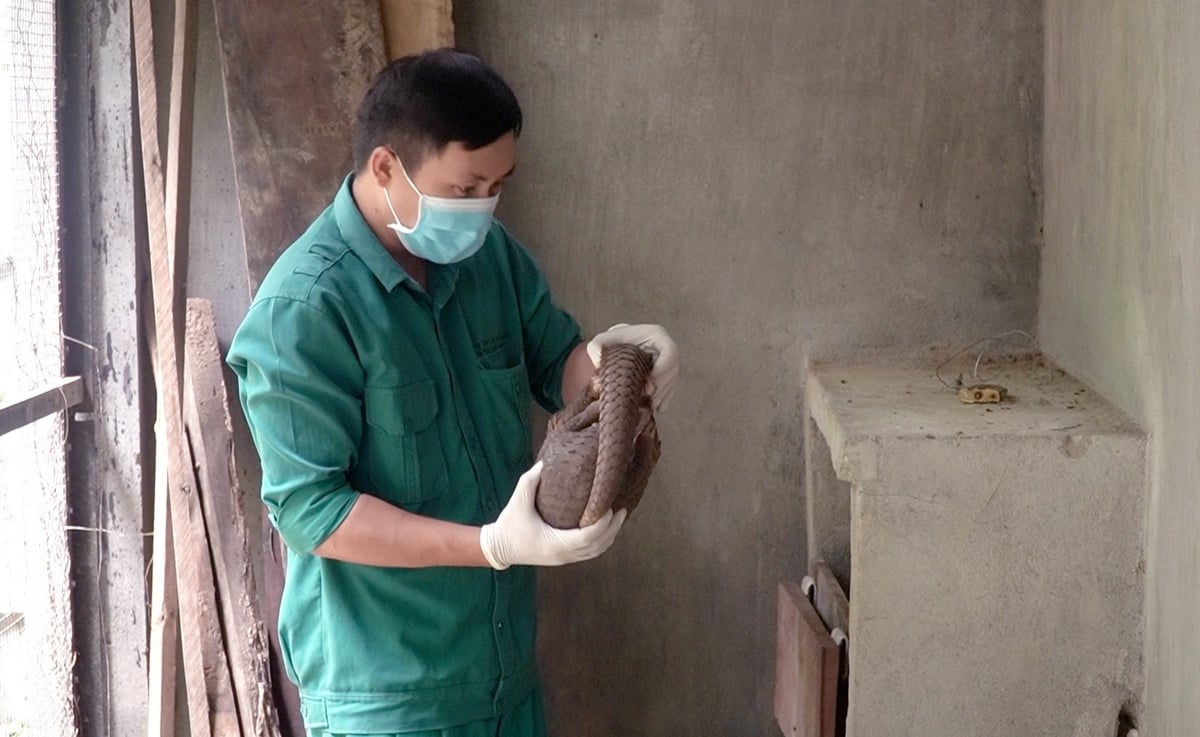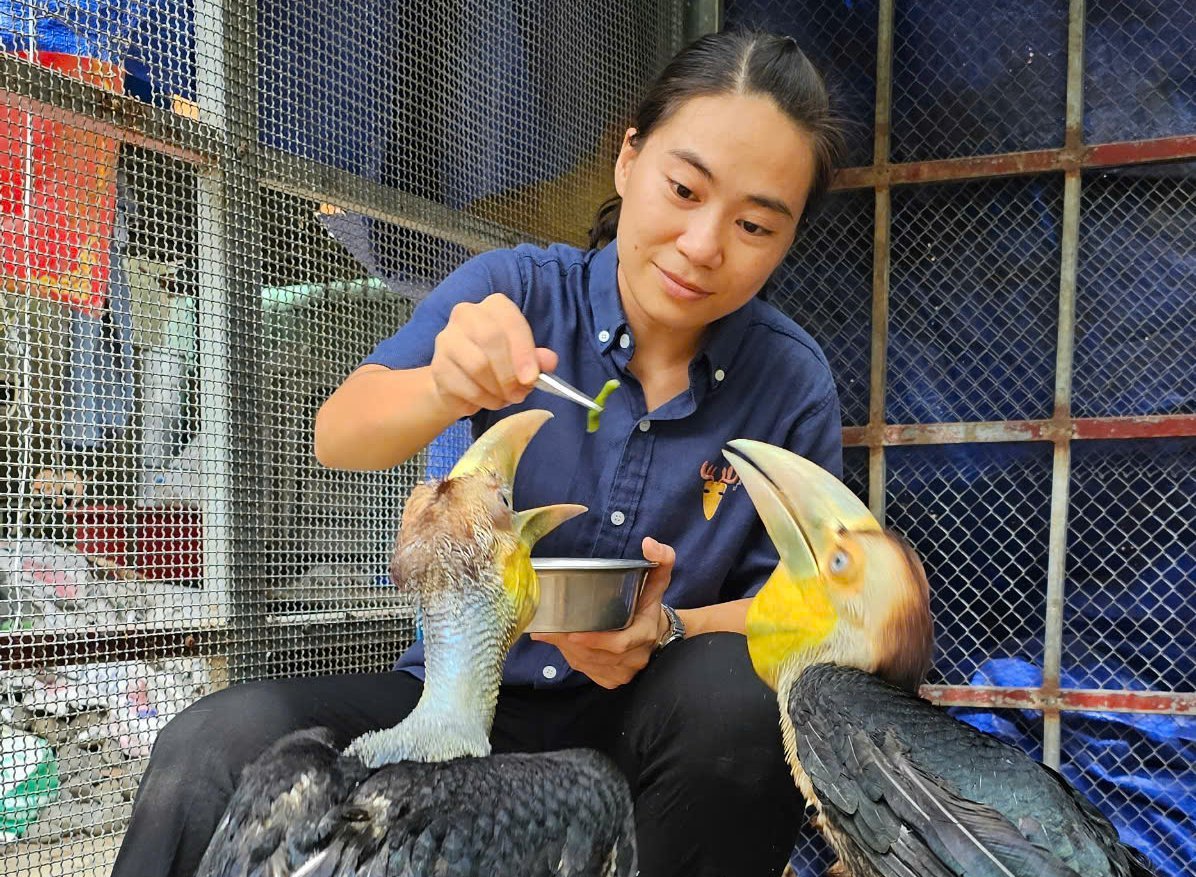December 5, 2025 | 18:54 GMT +7
December 5, 2025 | 18:54 GMT +7
Hotline: 0913.378.918
December 5, 2025 | 18:54 GMT +7
Hotline: 0913.378.918
Following the deaths of 21 tigers and leopards from avian influenza A/H5N1 in Dong Nai province, veterinary and forest protection experts conceded a significant gap: captive wild animals in Vietnam have never been included on the national epidemiological map. This is despite the fact that many of these species pose a high risk for cross-species disease transmission.

To date, we still do not fully understand wild animals as we do traditional livestock. Therefore, the veterinary system is sometimes passive in epidemic situations in these species. Photo: Le Binh.
"We monitor diseases by groups like poultry, livestock, and aquatic animals," explained Associate Professor Dr. Le Thanh Hien of Ho Chi Minh City University of Agriculture and Forestry. "But farms raising tigers, bears, monkeys, and wild birds seem to fall outside this network. There are no designated epidemic zones, no regular testing, and no specialized veterinarians. They live completely off the national disease prevention radar."
According to statistics from the Department of Forestry and Forest Protection, Vietnam has approximately 12,000 facilities and households that raise wild animals, including nearly 80 rescue centers. However, the current veterinary and forest protection systems lack a robust framework for monitoring the health of these species. There is also no dedicated budget for disease prevention in wild animals. Many veterinary experts agree that this represents a serious institutional gap.
The challenge is compounded by the unique biological characteristics of many wild species, which traditional veterinary medicine lacks the personnel and expertise to address. Rescue centers, zoos, and private farms often operate based on experience or informal cooperation with non-governmental organizations.
Nguyen Phuoc Quy, a resident of Phu Lam commune in Dong Nai province, has been raising 100 civets at home for about four years. Despite receiving expert support from the STOP Spillover project, he often feels lost when his animals fall ill. "Civets rarely get sick, but it's not absolute," he shared. "When they lose their appetite or become lethargic, I get very worried. I can’t buy medicine specifically for civets, so I often have to use human medicine to treat them. Every time one gets sick, I get nervous, afraid it will spread to the whole group."
This issue is mirrored at the Vuon Xoai Ecological Tourist Co., Ltd., the site of the previous tiger deaths. Mr. Ngo Van Sang, the company's director, stated, "When a tiger or leopard shows abnormal signs, our veterinary staff can only treat them based on experience and guesswork, focusing on improving their general health. There's also no specialized equipment for advanced diagnostics. Even when we detect a dangerous virus or parasite, we don't know who to report it to or what protocols to follow."
Wild animals are seemingly an afterthought in the "One Health" strategy. Yet, they are a primary source of new and dangerous diseases that could spread if left unchecked.

Wildlife seems to be "forgotten" in the One Health strategy. However, this is the subject that is at risk of spreading and transmitting many new and dangerous diseases if not well controlled. Photo: Le Binh.
For the past decade, Vietnam has repeatedly affirmed its commitment to the One Health strategy, which connects human health, animal health, and environmental protection to control cross-species diseases. However, there appears to be no specific operational mechanism for integrating wild animals into this model's core.
The One Health Strategy for 2021-2025, a collaborative effort by the Ministry of Health, the former Ministry of Agriculture and Rural Development, and the former Ministry of Natural Resources and Environment, identified wild animals as a key source of risk. Despite this, critical components such as establishing a surveillance network for wildlife, training specialized veterinary personnel, and creating a disease early-warning system for forests have yet to be widely implemented.
Thibault Ledecq, Conservation Director at WWF-Vietnam, noted that Vietnam's commitment to the One Health initiative is robust, particularly in controlling diseases from animals to livestock. However, its application to wild animals remains limited.
"At many captive wildlife facilities, including commercial farms, zoos, and rescue centers, measures like vaccination and routine health screenings are not fully implemented," Ledecq said. "Furthermore, the professional expertise of veterinarians at these facilities and in the public sector is not on par with the veterinary system for the livestock industry. We recommend the state increase its focus on wildlife programs to complete the One Health initiative."

Wildlife needs more attention, data and disease control plans need to be developed if we don't want the veterinary and human disease control sectors to collapse. Photo: Le Binh.
This issue is not unique to Vietnam. A report by the Global Wildlife Health Alliance indicates that more than 70% of countries with tropical forests have not integrated wildlife disease data into their public health systems. However, many are beginning to change.
Rwanda, for instance, has a health monitoring network for mountain gorillas that combines veterinarians, rangers, and local communities. Thailand and Malaysia collaborate with international organizations to track influenza and coronavirus in wild birds and bats. A few similar programs are now being launched in Vietnam.
The need to monitor the health of wild species is becoming increasingly urgent, not just for conservation but for public health. Avian influenza A/H5N1 has been documented in bears in China, lions in India, and ferrets in Europe. The surveillance system must be proactive to avoid being caught off guard. The tiger deaths in Dong Nai are a stark example, exposing a system not yet designed to protect these special individuals or to recognize that wildlife health is a critical component of national health security.
Translated by Linh Linh
/2025/12/02/2629-3-141849_60.jpg)
(VAN) Based on its large-scale planted forests, several rubber enterprises have proactively conducted greenhouse gas emission inventories in preparation for entering the forest carbon credit market.

(VAN) MAE is leading in developing a national rare earth strategy, which will be submitted to the competent authorities for promulgation in early 2026.
/2025/12/02/4006-4-092040_652.jpg)
(VAN) The model of converting low-efficiency rice land to aquaculture in many localities has helped increase incomes by 5 to 15 times, improve the environment, and form new fisheries economic zones.

(VAN) Funded by ACIAR, Project FST/2020/123 focuses on measures to prevent harmful alien species, thereby protecting forests from invasive threats.

(VAN) The National Assembly's Supervisory Delegation pointed out solutions for the blue economy, circular economy, environmental protection, and technology application for sustainable marine governance.

(VAN) Lao Cai’s forestry sector is stepping into the spotlight with a series of pioneering initiatives in forest management, monitoring, and sustainable development aimed at generating carbon credits.

(VAN) The Provincial Competitiveness and Governance Index (PCGI) is a tool designed to reflect the quality of local governance.